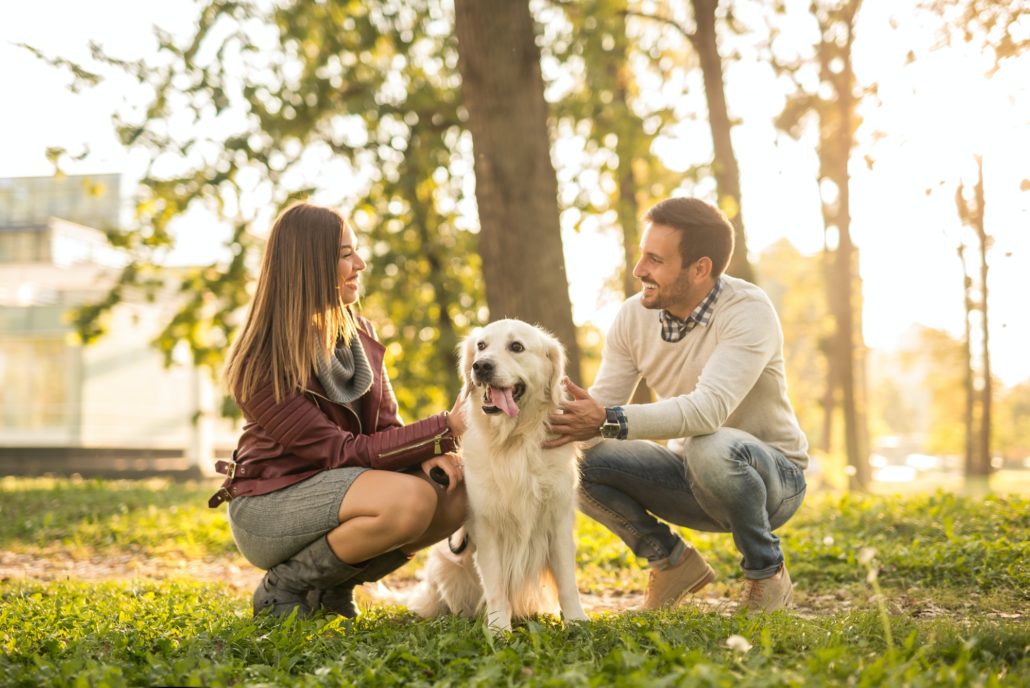
3961 Hastings Street
Burnaby, BC V5C 2H8
604 291 6666
Client Support
Mon - Thu: 8AM - 6PM | Fri: 7AM - 5PM
Online store always open
Burnaby, BC V5C 2H8
Client Support
Online store always open

It’s that time of year again. Time to take your dog to the veterinarian for their annual examination. But maybe you’re thinking that you might skip it this year. After all, they aren’t sick. Maybe you will just put it off until next year – what could it hurt? Actually, delaying an annual physical exam can hurt.
Annual physical exams are an important part of providing optimal health care and the best longevity for your beloved companion. Dogs age quickly and they are unable to tell us if they are feeling a little off. Remember, it may be one year in your life but that can be about 5-10 comparative years in your pet’s life. A lot can change in that much time.
Your veterinarian has special training and experience in detecting subtle illness in pets. Listening to the heart can detect murmurs. Increased lung sounds may indicate early illness. Abdominal palpation may reveal pain in certain areas, abnormal size and shape of various organs or even tumors. Checking out the eyes can detect early signs of cataract or other ocular problems. Ears may be in need of cleaning or medication. Dental disease may be detected as well as signs of allergies or skin problems. It’s easier for someone who doesn’t see your pet every day to detects lumps and bumps that you may not have noticed. Comparing annual weights, too, can determine if your dog is heading down the path to obesity or is slowly losing weight.
As a dog reaches middle to older age, annual physical exams become even more important. Certain problems that you may simply attribute to “old age,” and just something you will have to live with, may be signs of underling disease and may be very treatable. Annual physical exams also give you an opportunity to ask your veterinarian any questions you may have about your dog’s health. Your veterinarian may recommend certain additional tests to determine overall health based on physical exam findings or may have suggestions for improving the quality of your dog’s life. Remember, the primary goal for your veterinarian is to keep your dog healthy and provide the best care available.
A physical examination is not just a chance for your vet to see how cute your dog is; a thorough exam can pick up on a variety of illnesses and prevent potential catastrophic disease. By finding, diagnosing and treating these problems early, your pet will live a much healthier and longer life.
A recheck examination is an appointment that allows your veterinarian to assess the progress and follow-up on your dog’s disease or problem. Maybe you are thinking you can skip it because your dog is doing better? Even if your dog physically looks and feels better, he or she may not be completely back to normal. Some diseases can progress with very few outward signs. Let your veterinarian be the best judge of when and how many recheck visits are required for your pet.
Consider the possibility that recheck exams may actually save you time and money in the long run. Some chronic diseases can spiral out of control if not closely monitored for subtle changes. This could ultimately lead to more lengthy procedures, hospitalizations, trips back and forth to your veterinarian, and significantly higher veterinary bills.
The recheck visits to your veterinarian will depend on the medical condition your dog has. If the condition is chronic, they may require life long-term treatment as well as regular rechecks.
Recheck exams are a worthwhile investment in your dog’s overall health. By taking your dog in for a “re-check” you are providing your dog the best possible care by allowing his progress to be professionally monitored. By finding, diagnosing and treating these problems early and thoroughly, your dog will live a much healthier and longer life.
Exercise is as important for your dog as it is for you. Young dogs and healthy adults alike need lots of it, and even senior pets need a regular daily workout to maintain their health. The type of exercise you choose depends on the age and fitness of your dog and your own lifestyle. Dogs are adaptable and are happy to play Frisbee in the park or take long walks in the neighborhood.
Exercise is one of the best ways to spend time with your pet. It’s especially important for large breed, working, and active breed types. Dogs are wonderful athletes and most adapt to even strenuous exercise, provided they have had adequate opportunity to “train” and the environmental conditions are not too extreme.
Daily exercise is recommended unless the weather is especially dangerous or a medical problem limits your dog’s activity. If there is a medical problem, consult your veterinarian about exercise limitations. Keep in mind that obese dogs and those with heart and lung diseases may have a problem, and be sure to consult your vet before starting a new regime.
Be certain your dog has plenty of water available at all times, and provide a place to cool down out of the sun. When the temperature drops below freezing, exercise should be limited, unless your dog is really used to this weather. This will often vary with the breed and hair coat. If you live in an area that gets cold and icy, remember that road salt can burn your dog’s feet. Don’t forget: even in cold weather, an exercising dog needs plenty of water. It’s better to exercise in the early morning or evening when the heat is and the humidity is less.
Although it’s often overlooked, grooming is an important part of your dog’s health program. Routine brushing and combing removes dead hair and dirt and prevents matting. Because it stimulates the blood supply to the skin, grooming also gives your pet a healthier and shinier coat.
Start regular grooming when you first bring your dog home and make it a part of his routine. Purchase a good-quality brush and comb and get your dog used to being handled. Praise your dog when he holds still and soon he will come to enjoy the extra attention. Some breeds have special grooming needs, so ask your vet or a professional groomer for advice on particular equipment necessary for your pet.
The need for bathing depends on the breed of dog, his skin type and hair coat, owner preference and just how dirty your pet gets. Bathing your dog every month or two isn’t unreasonable, but some dogs will need more frequent cleanings. A good rule of thumb is to bathe your pet only when his coat gets dirty or begins to smell “doggy.” When bathing your dog, make sure to rinse all the soap out of his coat. If he has persistent problems with scratching or flaky skin, he may need a special medicated shampoo or have a skin problem that your veterinarian should examine.
Ears may also require cleaning, especially in dogs with oily skin or allergies. This is a delicate task and is probably best left to your vet. However, if your dog is easy to handle, you can learn to do this chore yourself. To remove excessive wax and debris from the ears, consider an ear cleaning every two to four weeks. Ask your veterinarian about products you can use at home, and be sure to ask for a demonstration of proper ear cleaning techniques.
While clipping nails is a painless and simple process, it takes practice and patience to master the skill. Ask your vet to show you the correct technique, then get started by getting your pet used to having his paws handled. Once you start using the clippers, go slowly: Try clipping just a few nails in one sitting. Maintain a regular schedule and be persistent. Your pet will eventually develop patience and learn to cooperate.
The flea is a small, brown, wingless insect that uses specialized mouthparts to pierce the skin and siphon blood.
When a flea bites your dog, it injects a small amount of saliva into the skin to prevent blood coagulation. Some animals may have fleas without showing discomfort, but an unfortunate number of dogs become sensitized to this saliva. In highly allergic animals, the bite of a single flea can cause severe itching and scratching.
Remember that the flea spends the majority of its life in the environment, not on your pet, so it may be difficult to find. In fact, your dog may continue to scratch without you ever seeing a flea on them. Check your dog carefully for fleas or for signs of flea excrement (also called flea dirt), which looks like coarsely ground pepper. When moistened, flea dirt turns a reddish brown because it contains blood. If one dog in the household has fleas, assume that all pets in the household have fleas. A single flea found on your pet means that there are probably hundreds of fleas, larva, pupa and eggs in your house. If you see tapeworm segments in your dog’s stool, he may have had fleas at one time or may still have them.
Current flea control efforts center on oral and topical systemic treatments. These products not only treat existing flea problems, they also are very useful for prevention. In fact, prevention is the most effective and easiest method of flea control.
It is best to consult your veterinarian as to the best flea control and prevention for your pet. The choice of flea control should depend on your pet’s life-style and potential for exposure. Through consistent use of these systemic monthly flea products, the total flea burden on your pet and in the immediate environment can be dramatically reduced.
Most people are aware that their pets have worms, but just what are these worms, where do they get them and how do you get rid of them? When pet owners talk about worms, they are really talking about all gastrointestinal parasites. And there are several gastrointestinal parasites that commonly affect our dogs and cats, some of them in low numbers – so they can cause stress on the pets body without us seeing them in their stools.
We recommend testing your pet for gastrointestinal parasites once to twice a year depending on their lifestyle. This can be done as a part of your pet’s annual check up. If any parasites are found on routine testing, your vet will recommend the appropriate treatment.
We prepared a series of blogs with everything you need to know about dog care.
From puppy to senior care, explore all the other dog-related pages that we created for you!
Sign up for our newsletter to receive the best tips, articles and other resources for your pet’s health.
08:00 AM - 6:00 PM
08:00 AM - 6:00 PM
08:00 AM - 6:00 PM
08:00 AM - 6:00 PM
07:00 AM - 5:00 PM
We are closed